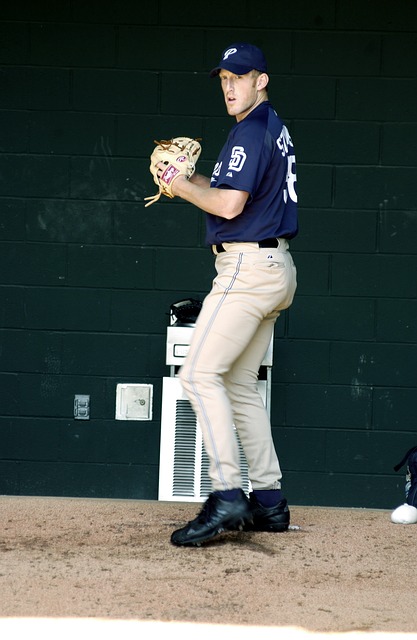You only “pitch” when you are in the stretch
July 27, 2017 by Coach McCreary
Filed under Pitching
 How many times have you seen a pitcher warm-up before a game or throw a bullpen between starts and never (or almost never) throw any pitches from the stretch? I lost count.
How many times have you seen a pitcher warm-up before a game or throw a bullpen between starts and never (or almost never) throw any pitches from the stretch? I lost count.
Think about it … when you are pitching in a game and you are in a jam, that means runners are on base, correct? And if runners are on base, you’ll now have to “pitch” to get yourself out of the jam, right? And if you are in a jam and have to bare down with runners on you’ll be pitching from the stretch, correct? Knowing all that, wouldn’t it be more valuable to throw the majority of your practice and bullpen session pitches from the stretch?
Always remember that the Wins and Loses go next to your name as the pitcher. How you pitch with runners on base will ultimately determine which one it ends up being.
Want more W’s? Practice mostly from the stretch!





Hi Coach,
I have coached little league kids for 8 years and up until 14 years old and the majority actually pitch better from the stretch as there is less body mechanics that can go wrong. I have seen first hand at the 60 foot distance kids only pitch from the stretch because their accuracy is not as good as the full wind up. They threw fine from the full wind up at the shorter distances. The key here is actually playing situational baseball while throwing bullpens to get better as a pitcher in all aspects of them game. You need to learn how to use the corners and get ahead in the strike zone. The other key is teaching catchers how to frame pitches better for their pitchers. I have seen to many called ball’s when the pitcher throws the ball to the catcher and his glove does not even move. That one drives me crazy when the umpire has a tight zone as my argument is the catchers glove did not even move. We know umpires don’t want to here you argue balls and strikes. As a coach I am always worried about pitch counts and want my pitcher to have high strike ratio’s to balls. They need to practice bullpens with all the these situations mention above to be better.
Coach Lennon,
I agree 100% about practicing your pitching in a situational environment. Coach McCreary has an EXCELLENT off season development plan complete with pitch charts that encourage each bullpen session to be situational. It helps the players focus on pitching with purpose rather then throwing pitches. In addition, Coach Manero likes to focus his bullpens on specific situations. He will ask a pitcher to throw 10 pitches from the stretch or from the wind-up with a 1:1 count insisting that they convert to 1:2.
I’ve adapted some of this for Little League aged boys as well so our bullpen sessions focused on hitting the inner half and outer half to a left or right handed batter on purpose with every pitch. There were two major keys here, the catcher knew what to expect each pitch and it was his job to win the pitch; and the coach charted and tracked the pitchers ability to hit the spots. We shared that feedback immediately with the pitcher and catcher in the session. The results were immediate. We went from being a sub .500 team the first half of the season to nearly winning Little League districts and taking two weekend tournament titles in back to back weekends. While we did hit the cover off the ball, we also pitched with purpose and had our catchers looking to win the pitch.
For the high school players, I’ve seen so many of our boys throw excellent stuff from the wind-up only to fall apart when going to the stretch. With this, I would reiterate that Coach McCreary’s off season pitching program forces a pitcher to throw from both the stretch and the wind-up. If you haven’t picked it up yet – go get it now – its awesome!